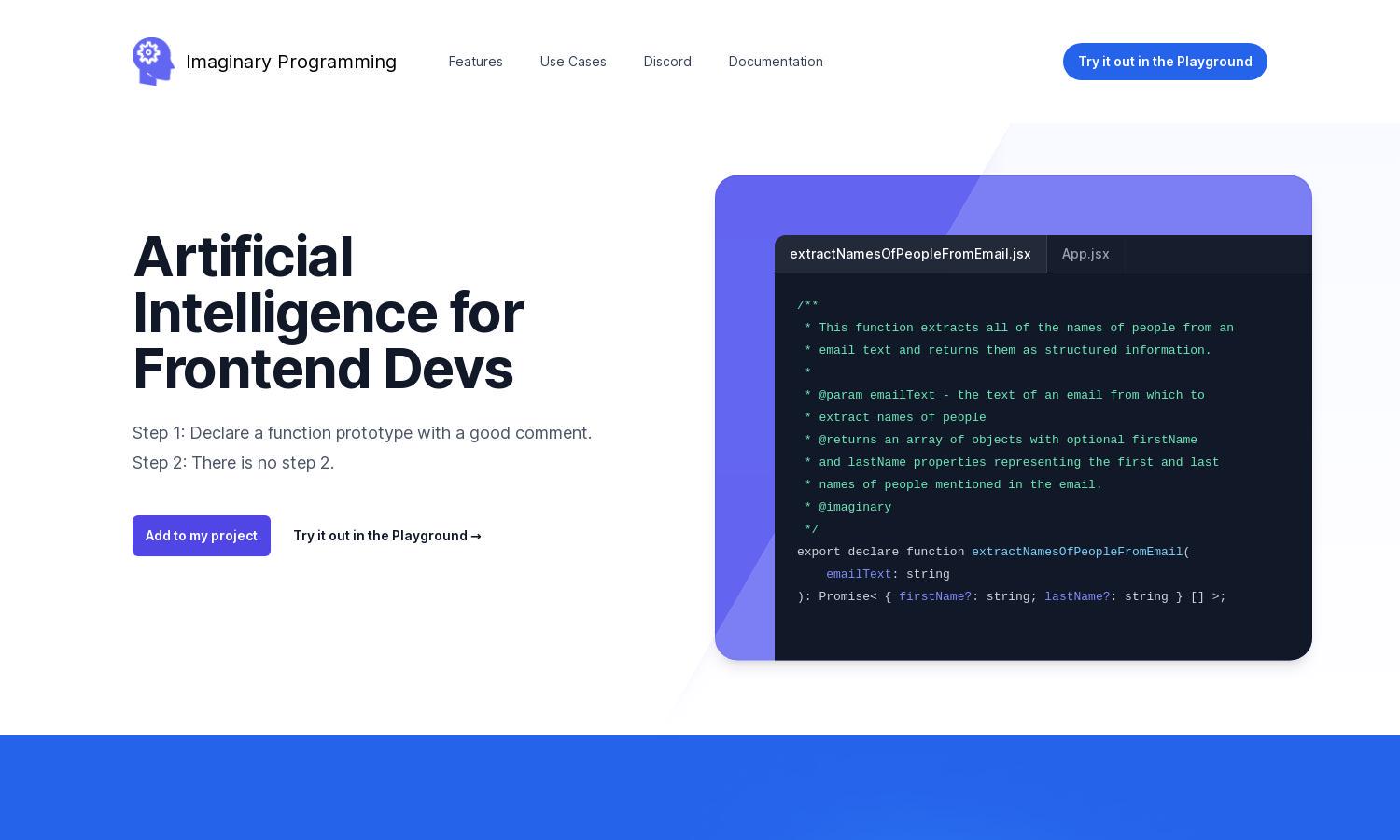Imaginary Programming

About Imaginary Programming
Imaginary Programming redefines software development by integrating AI to help frontend developers create applications effortlessly. This innovative platform allows users to define function prototypes in TypeScript, leveraging advanced Large Language Models to generate intelligent code solutions, reducing development time and enhancing creativity.
Imaginary Programming offers a free trial to explore its capabilities, with subscription tiers that provide additional features. Each tier unlocks advanced tools and functionalities, allowing users to scale their AI-driven development process. Premium plans offer discounts for annual subscriptions, enhancing value for committed users.
Imaginary Programming boasts a user-friendly interface designed to facilitate seamless navigation and interaction. Its intuitive layout ensures developers can easily access features while efficiently integrating AI into their projects. With unique functionalities that enhance user experience, Imaginary Programming stands out as an essential tool for developers.
How Imaginary Programming works
Users begin their journey with Imaginary Programming by signing up and accessing the main dashboard, where they can create and manage their projects. By defining function prototypes in TypeScript, users instruct the platform on desired outcomes. The unique integration of Large Language Models then generates code, allowing developers to implement AI-driven solutions effortlessly.
Key Features for Imaginary Programming
AI-driven Function Prototypes
Imaginary Programming's AI-driven function prototypes enable developers to leverage advanced algorithms to define desired code outputs. This unique functionality allows users to instruct an AI model directly, transforming the coding workflow and dramatically increasing productivity without needing extensive AI knowledge.
Structured Data Extraction
With Imaginary Programming's structured data extraction feature, users can easily pull valuable insights from unstructured text inputs. This core functionality allows developers to define the data structure they require, resulting in clear, organized JSON outputs that improve data usability and accelerate the development process.
Human-like Text Classification
Imaginary Programming excels in human-like text classification, enabling developers to determine the emotional context or intent behind written communications. This powerful feature allows users to build more responsive applications that understand user sentiments, enhancing interaction quality and providing deeper insights into customer needs.
You may also like:








